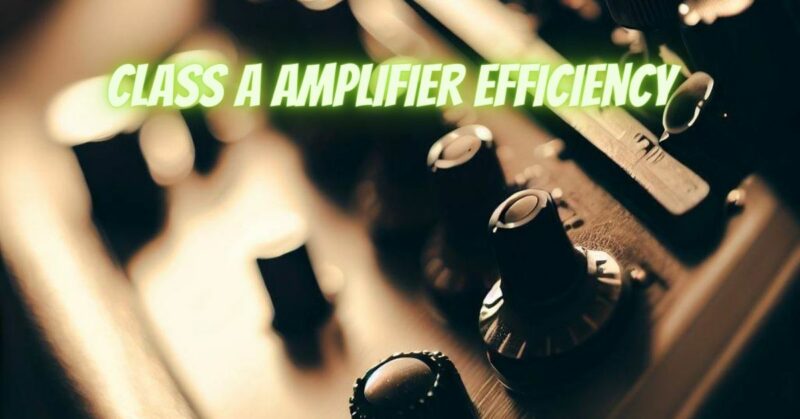Class A amplifiers are known for their superior audio quality and low distortion. However, one area where they often fall short is efficiency. In this article, we will delve into the concept of Class A amplifier efficiency, exploring its characteristics, limitations, and the trade-offs associated with this amplifier topology.
Understanding Class A Amplifiers:
Class A amplifiers are known for their biasing arrangement, where the output devices conduct current throughout the entire input signal cycle. This biasing ensures a linear response, minimizing distortion and providing excellent audio quality. In a Class A amplifier, the output devices are biased to operate in the active region, regardless of the input signal level.
Efficiency in Class A Amplifiers:
Efficiency is a measure of how effectively an amplifier converts input power into output power. Class A amplifiers have relatively low efficiency compared to other amplifier classes due to their continuous operation and constant power dissipation.
In a Class A amplifier, the output devices consume a significant amount of power, even when no audio signal is present. This constant power dissipation contributes to lower efficiency. The power dissipated as heat is given by the formula Pdiss = Vcc × Iq, where Vcc is the supply voltage and Iq is the quiescent current flowing through the output devices.
Trade-Offs and Considerations:
- Heat Dissipation: Class A amplifiers generate a substantial amount of heat due to their continuous operation, which can lead to thermal management challenges. Adequate heat sinking and ventilation are necessary to prevent overheating and ensure stable amplifier performance.
- Power Consumption: The continuous operation of Class A amplifiers results in higher power consumption compared to other amplifier classes. This can be a concern in terms of energy efficiency and operational costs, especially for high-power applications.
- Battery Life: In portable or battery-powered devices, the lower efficiency of Class A amplifiers can significantly impact battery life. Other amplifier classes, such as Class D, are more commonly used in such applications due to their higher efficiency and power-saving capabilities.
- Signal-to-Noise Ratio: Despite their lower efficiency, Class A amplifiers excel in delivering low-distortion audio signals. The inherent linearity of Class A operation helps maintain a high signal-to-noise ratio, resulting in pristine sound reproduction.
- Application Considerations: Class A amplifiers are commonly employed in high-fidelity audio systems, professional audio equipment, and critical listening environments where audio quality is of utmost importance. They may not be the ideal choice for power-hungry applications or situations where efficiency is a primary concern.
Conclusion:
Class A amplifiers are renowned for their exceptional audio quality and low distortion. However, their efficiency is relatively low due to continuous operation and constant power dissipation. When choosing an amplifier, it is crucial to consider the specific requirements of your application, balancing the desired audio quality with factors such as power consumption, heat dissipation, and battery life. Class A amplifiers excel in high-fidelity applications, where audio purity takes precedence over efficiency. By understanding the trade-offs associated with Class A amplifiers, you can make informed decisions when selecting the most suitable amplifier for your audio system.


